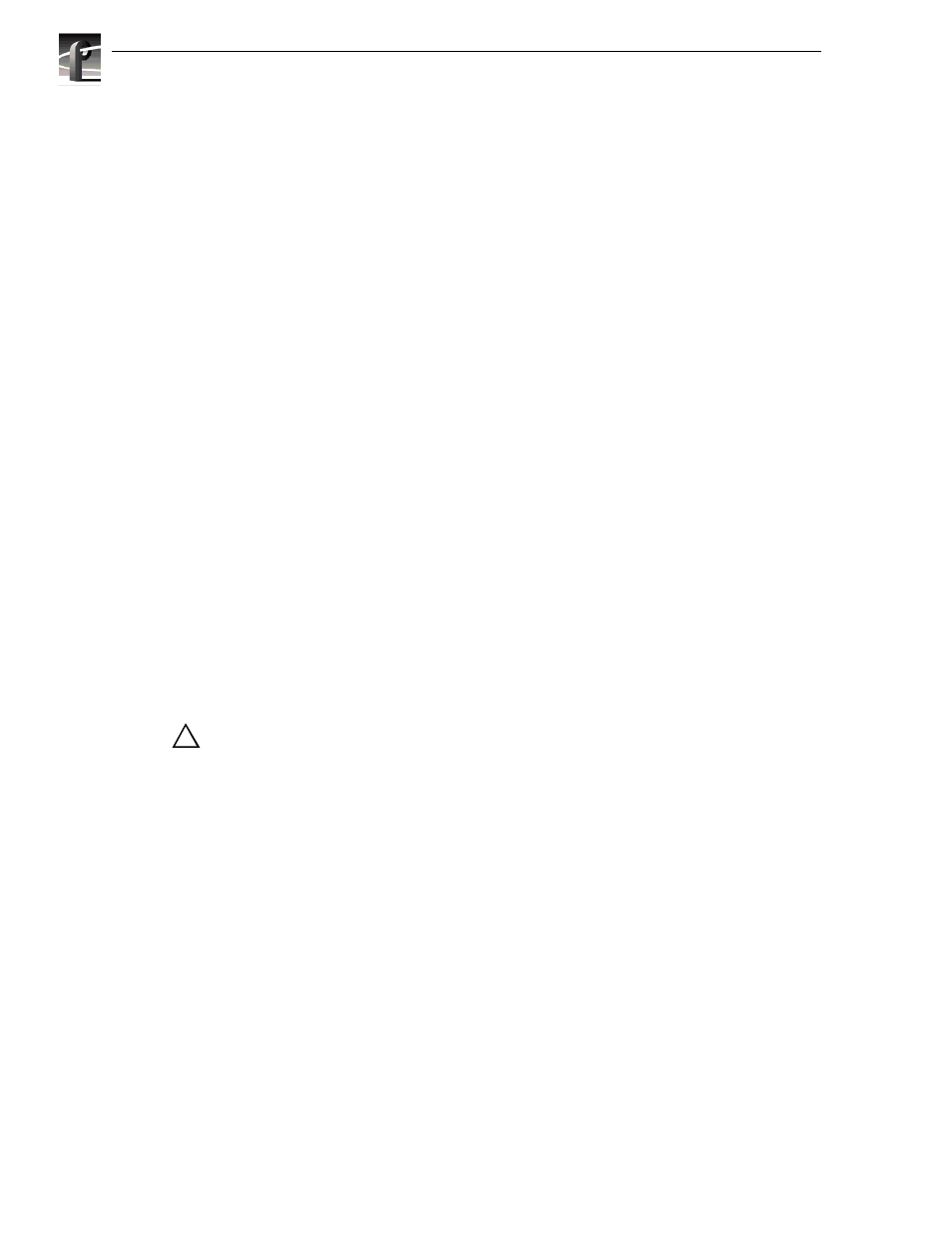Preventive maintenance, Cleaning, Exterior – Grass Valley PDR 200 Service Manual User Manual
Page 84: Interior, Visual inspection, Preventive maintenance -2, Cleaning -2, Exterior -2 interior -2, Visual inspection -2

Chapter 5 Maintenance
5-2
PDR 200 Service Manual
Preventive Maintenance
Preventive maintenance consists of cleaning and visual inspection. The preventive
maintenance schedule established for the equipment should be based on the
environment in which it is operated and the amount of use. Under average conditions,
scheduled preventive maintenance should be performed every 2000 hours of
operation.
Cleaning
The equipment should be cleaned often enough to prevent dust or dirt from
accumulating. Dirt acts as a thermal insulating blanket that prevents effective heat
dissipation, and can provide high-resistance electrical leakage paths between
conductors or components in a humid environment.
Exterior
Clean the dust from the outside by wiping with a soft cloth or small brush. A brush is
especially useful to remove dust from around the connectors. Hardened dirt may be
removed with a cloth dampened in water that contains 50% Isopropyl alcohol.
Abrasive cleaners should not be used.
Interior
Clean the interior by loosening the accumulated dust with a dry, soft brush. Once the
dirt is loosened, remove it with low-pressure air (high-velocity air can damage some
parts). Hardened dirt or grease may be removed with a cotton-tipped applicator
dampened with a solution of 50% Isopropyl alcohol and water. Abrasive cleaners
should not be used. If the circuit board assemblies must be removed for cleaning,
follow the removal/replacement instructions.
After cleaning, allow the interior to thoroughly dry before applying power to the unit.
CAUTION: Do not allow water to get inside any enclosed assembly or component.
Do not clean any plastic materials with organic cleaning solvents, such as benzene,
toluene, xylene, acetone, or similar compounds, because they may damage the
plastic.
Visual Inspection
After cleaning, carefully check the equipment for defective connections, damaged
parts, and improperly seated connectors and plug in components. If heat-damaged
parts are discovered, to prevent additional damage, determine the cause of
overheating before replacing the damaged part.
!